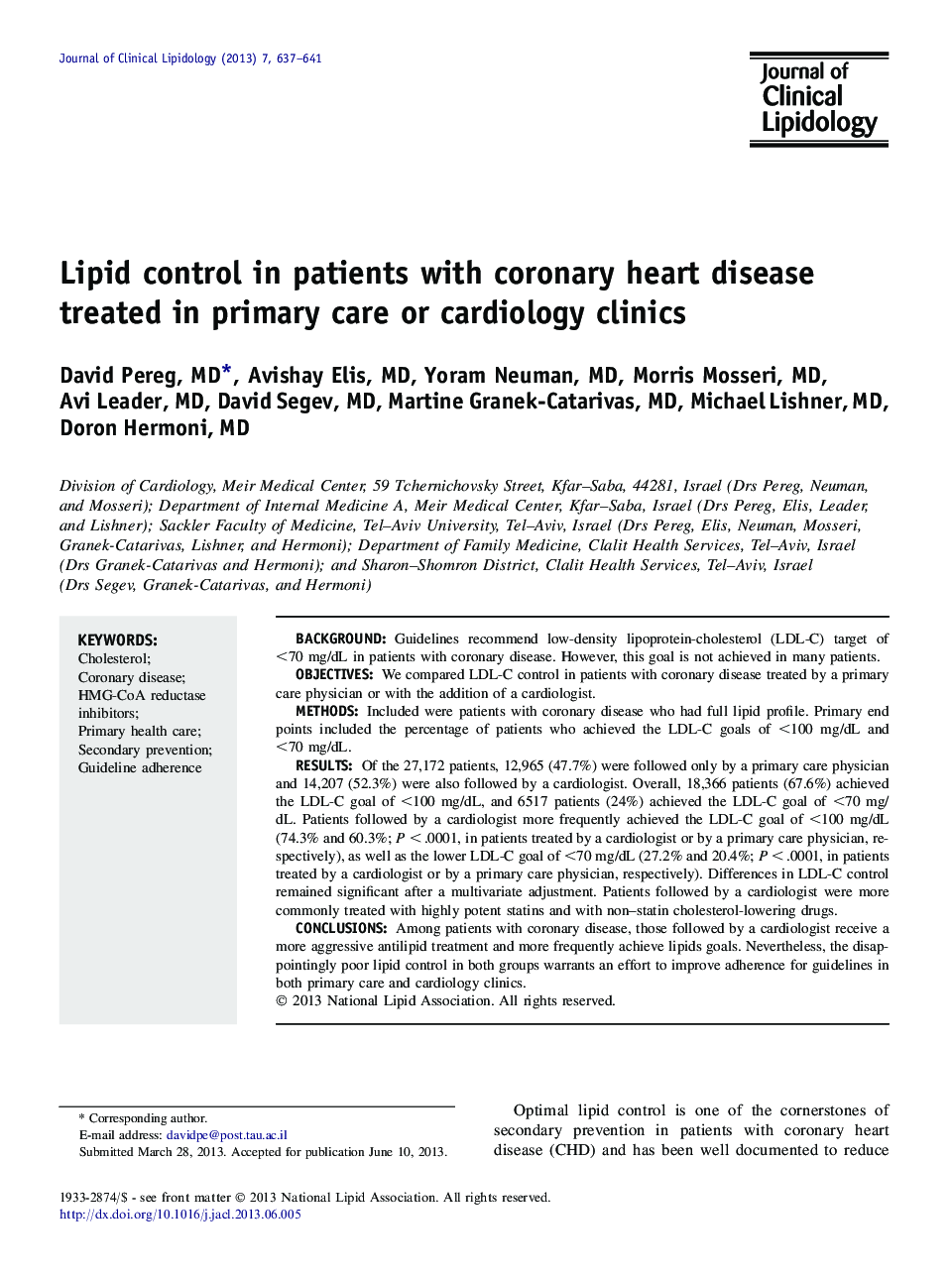| Article ID | Journal | Published Year | Pages | File Type |
|---|---|---|---|---|
| 2966187 | Journal of Clinical Lipidology | 2013 | 5 Pages |
►We assessed the effect of cardiologist follow-up on low-density lipoprotein control in patients with coronary heart disease.►Patients with coronary heart disease followed by a cardiologist more frequently achieve lipids goals.►Improved lipid control was due to more aggressive therapy and increased compliance.
BackgroundGuidelines recommend low-density lipoprotein-cholesterol (LDL-C) target of <70 mg/dL in patients with coronary disease. However, this goal is not achieved in many patients.ObjectivesWe compared LDL-C control in patients with coronary disease treated by a primary care physician or with the addition of a cardiologist.MethodsIncluded were patients with coronary disease who had full lipid profile. Primary end points included the percentage of patients who achieved the LDL-C goals of <100 mg/dL and <70 mg/dL.ResultsOf the 27,172 patients, 12,965 (47.7%) were followed only by a primary care physician and 14,207 (52.3%) were also followed by a cardiologist. Overall, 18,366 patients (67.6%) achieved the LDL-C goal of <100 mg/dL, and 6517 patients (24%) achieved the LDL-C goal of <70 mg/dL. Patients followed by a cardiologist more frequently achieved the LDL-C goal of <100 mg/dL (74.3% and 60.3%; P < .0001, in patients treated by a cardiologist or by a primary care physician, respectively), as well as the lower LDL-C goal of <70 mg/dL (27.2% and 20.4%; P < .0001, in patients treated by a cardiologist or by a primary care physician, respectively). Differences in LDL-C control remained significant after a multivariate adjustment. Patients followed by a cardiologist were more commonly treated with highly potent statins and with non–statin cholesterol-lowering drugs.ConclusionsAmong patients with coronary disease, those followed by a cardiologist receive a more aggressive antilipid treatment and more frequently achieve lipids goals. Nevertheless, the disappointingly poor lipid control in both groups warrants an effort to improve adherence for guidelines in both primary care and cardiology clinics.
